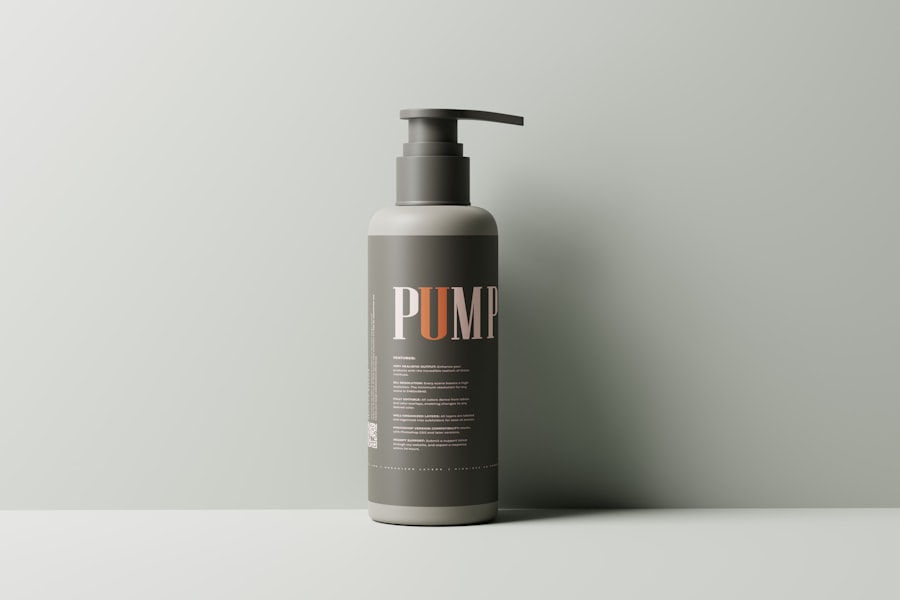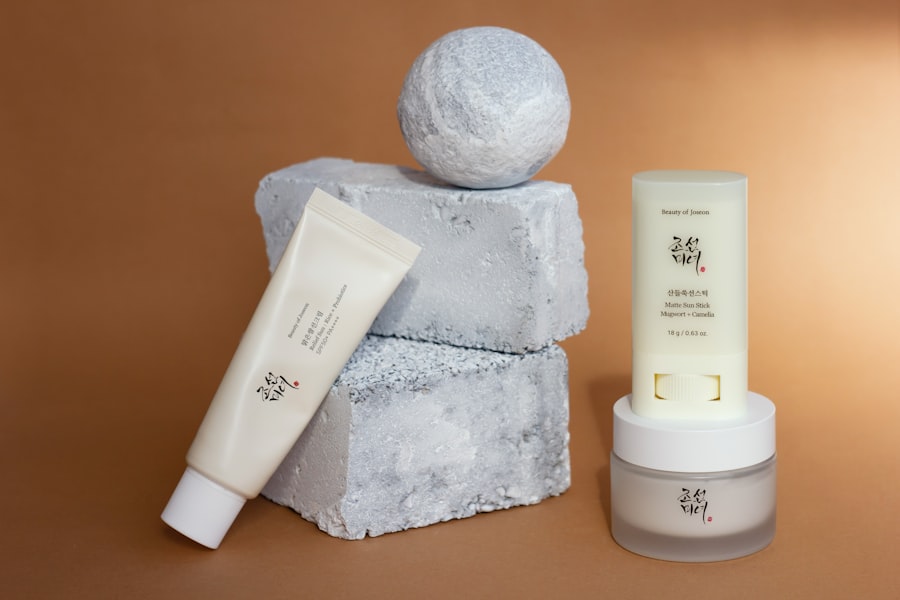Aftercare is a crucial aspect of any cosmetic procedure, particularly when it comes to hair removal treatments. You may not realize it, but the steps you take after your session can significantly influence the results you achieve. Proper aftercare helps to ensure that your skin heals correctly, minimizes the risk of complications, and enhances the overall effectiveness of the treatment.
By prioritizing aftercare, you are investing in the longevity and quality of your results. When you undergo hair removal procedures, your skin can be sensitive and vulnerable. This sensitivity makes it essential to follow a structured aftercare routine.
Neglecting this phase can lead to adverse effects such as irritation, infection, or even scarring. By understanding the importance of aftercare, you empower yourself to take control of your healing process and maximize the benefits of your treatment. Remember, the journey to smooth skin doesn’t end when you leave the clinic; it continues with the care you provide to your skin afterward.
Key Takeaways
- Aftercare is crucial for the success of hair removal treatments and to minimize potential side effects.
- A proper skincare routine can help to soothe and protect the skin after hair removal treatments.
- Avoiding sun exposure is essential to prevent skin damage and complications after hair removal treatments.
- Managing discomfort with ice packs or over-the-counter pain relievers can help to alleviate any post-treatment discomfort.
- Monitoring for complications such as excessive redness, swelling, or infection is important for the safety and success of hair removal treatments.
Proper Skincare Routine
Establishing a proper skincare routine post-treatment is vital for maintaining healthy skin and achieving optimal results. You should begin by cleansing the treated area gently with a mild, fragrance-free cleanser. This will help remove any residual products or impurities without causing further irritation.
Avoid using harsh scrubs or exfoliants for at least a week following your treatment, as these can exacerbate sensitivity and lead to complications. Moisturizing is another essential step in your post-treatment skincare routine. Applying a soothing, hydrating lotion or cream can help alleviate dryness and promote healing.
Look for products that contain calming ingredients like aloe vera or chamomile, which can provide additional relief to your skin. Remember to apply moisturizer regularly, especially after cleansing, to keep your skin hydrated and comfortable. By adhering to a gentle skincare routine, you can support your skin’s recovery and enhance the results of your hair removal treatment.
Avoiding Sun Exposure

One of the most critical aspects of aftercare is avoiding sun exposure. Your skin will be particularly sensitive after hair removal treatments, making it more susceptible to sunburn and pigmentation changes. You should make it a priority to stay out of direct sunlight for at least two weeks following your procedure.
If you must be outdoors, wearing protective clothing and seeking shade can help shield your skin from harmful UV rays. In addition to avoiding direct sun exposure, applying a broad-spectrum sunscreen with an SPF of 30 or higher is essential. Even on cloudy days, UV rays can penetrate through the clouds and cause damage to your skin.
By diligently applying sunscreen every two hours when outdoors, you can protect your skin from potential complications and ensure that your results remain intact. Taking these precautions will not only help you heal but also contribute to the long-term health of your skin.
Managing Discomfort
| Technique | Effectiveness | Notes |
|---|---|---|
| Deep Breathing | High | Helps to relax and reduce tension |
| Progressive Muscle Relaxation | Medium | Can help to release physical tension |
| Mindfulness Meditation | High | Can increase tolerance to discomfort |
| Distraction Techniques | Low | May provide temporary relief |
Experiencing some discomfort after hair removal treatments is common, but managing this discomfort effectively is key to a smooth recovery process. You may notice redness, swelling, or a mild burning sensation in the treated area. To alleviate these symptoms, consider applying a cold compress or ice pack wrapped in a cloth for short intervals.
This can help reduce inflammation and provide immediate relief. Over-the-counter pain relievers such as ibuprofen or acetaminophen can also be beneficial in managing discomfort. However, it’s essential to consult with your provider before taking any medication to ensure it’s appropriate for your situation.
Additionally, avoid hot baths, saunas, or vigorous exercise for a few days post-treatment, as these activities can exacerbate discomfort and irritation. By taking proactive steps to manage any discomfort you experience, you can create a more pleasant recovery experience.
Monitoring for Complications
While most individuals experience minimal side effects after hair removal treatments, it’s crucial to monitor your skin for any signs of complications. You should keep an eye out for unusual symptoms such as excessive redness, swelling that doesn’t subside, or any signs of infection like pus or increased warmth in the treated area. If you notice any concerning changes, don’t hesitate to reach out to your provider for guidance.
Being vigilant about monitoring your skin allows you to address potential issues early on. Early intervention can prevent minor complications from escalating into more significant problems. Your provider may recommend specific treatments or adjustments based on your observations, ensuring that you receive the best possible care during your recovery process.
By staying informed and proactive about your skin’s condition, you can contribute to a smoother healing journey.
Following Up with Maintenance Treatments

Aftercare doesn’t end with the initial treatment; following up with maintenance treatments is essential for achieving long-lasting results. Depending on the type of hair removal procedure you underwent, you may need additional sessions spaced out over time to target any remaining hair follicles effectively. These follow-up treatments are crucial for ensuring that you achieve the desired level of hair reduction.
Your provider will work with you to create a personalized maintenance schedule based on your specific needs and hair growth patterns. Sticking to this schedule is vital for maximizing the effectiveness of your treatments and minimizing hair regrowth. By committing to regular maintenance sessions, you are investing in the long-term success of your hair removal journey and ensuring that you enjoy smooth skin for years to come.
Communicating with Your Provider
Open communication with your provider is an essential component of effective aftercare. If you have any questions or concerns about your recovery process or the results of your treatment, don’t hesitate to reach out for clarification. Your provider is there to support you and address any issues that may arise during your healing journey.
Additionally, sharing feedback about your experience can help your provider tailor future treatments to better suit your needs. Whether it’s discussing discomfort levels or expressing concerns about specific areas, maintaining an open dialogue fosters a collaborative relationship that benefits both parties. Remember that your provider is invested in your satisfaction and well-being; by communicating openly, you can work together to achieve the best possible outcomes.
Long-Term Hair Removal Maintenance
Long-term maintenance is key to enjoying the benefits of hair removal treatments over time. As you progress through your aftercare and maintenance sessions, it’s important to adopt habits that support lasting results. This includes continuing to practice good skincare routines and protecting your skin from sun exposure even after the initial healing phase has passed.
You should also be aware that individual hair growth patterns may change over time due to factors such as hormonal fluctuations or aging. Staying attuned to these changes allows you to adjust your maintenance schedule accordingly and seek additional treatments if necessary. By prioritizing long-term maintenance and remaining proactive about your skincare regimen, you can ensure that you continue to enjoy smooth, hair-free skin well into the future.
In conclusion, understanding the importance of aftercare in hair removal treatments cannot be overstated. By following a proper skincare routine, avoiding sun exposure, managing discomfort effectively, monitoring for complications, committing to maintenance treatments, communicating openly with your provider, and focusing on long-term care, you set yourself up for success in achieving and maintaining beautiful results. Your journey toward smooth skin is ongoing; embrace each step with care and dedication for optimal outcomes.
After undergoing laser hair removal treatment at Elase, it is crucial to follow proper aftercare instructions to ensure the best results. One helpful article on laser hair removal aftercare can be found at In Laser Hair Removal. This article provides valuable tips and guidelines on how to care for your skin post-treatment to minimize any potential side effects and maximize the effectiveness of the procedure. For more information on laser hair removal and other related topics, you can also visit the blog section at




